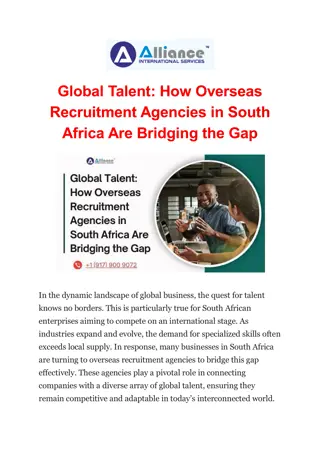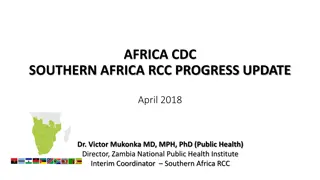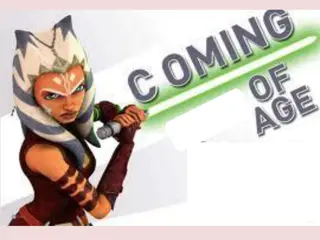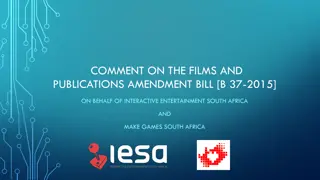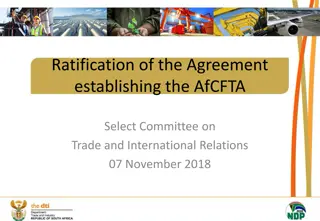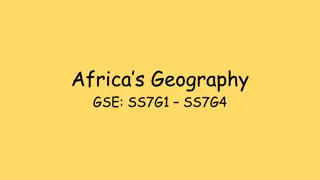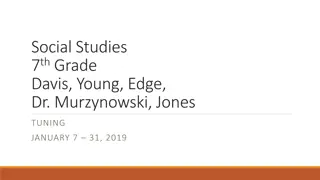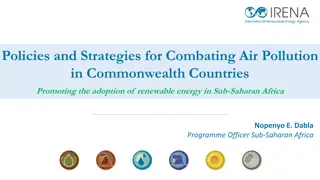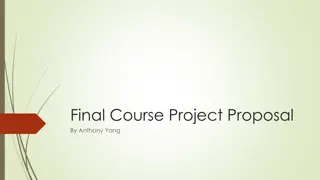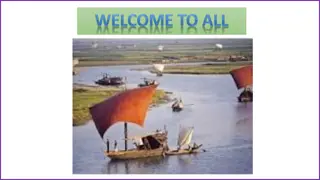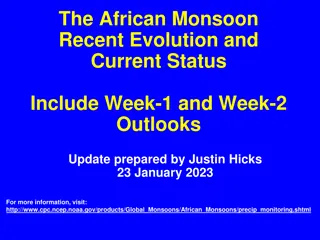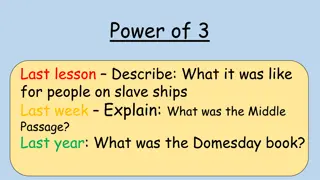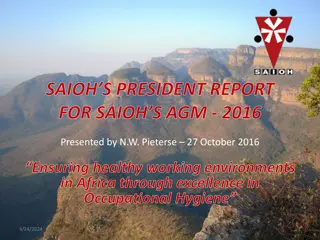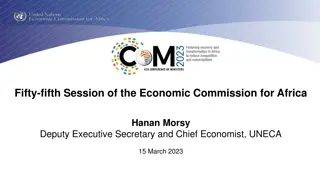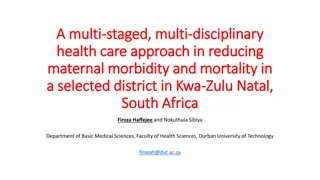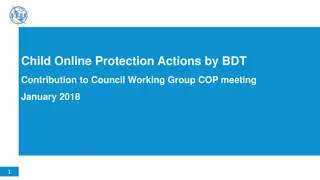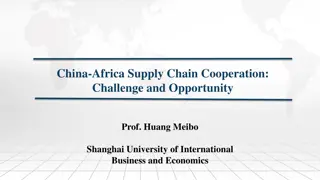
Insights on the Somalian War and Human Suffering
Explore the complexities of the Somalian War starting in the 1990s, its impact on civilians, and reflections on human suffering by George Alagiah. Delve into different perspectives on poverty, suffering, news industry, starvation, and unity as portrayed in the context.
Download Presentation

Please find below an Image/Link to download the presentation.
The content on the website is provided AS IS for your information and personal use only. It may not be sold, licensed, or shared on other websites without obtaining consent from the author. If you encounter any issues during the download, it is possible that the publisher has removed the file from their server.
You are allowed to download the files provided on this website for personal or commercial use, subject to the condition that they are used lawfully. All files are the property of their respective owners.
The content on the website is provided AS IS for your information and personal use only. It may not be sold, licensed, or shared on other websites without obtaining consent from the author.
E N D
Presentation Transcript
A Passage to Africa
Is it ever just to share human suffering?
You have 12 minutes to research the Somalian war which began in the 1990s. What can you find out? Share what you believe to be the most significant thing you discover via www.menti.com code: 8181317
Although united as one nation in 1960, northern and southern Somalia had for years worked as two separate countries. As early as December 1961, northern Somali military leaders pushed for separation of the north and the south. The outbreak of a civil war led to an economic decline, and different clans tried to take control. Somali civilians suffered the most in the unstable years that followed. It was estimated that some three hundred thousand Somalis died between 1991 and mid-1993. The United States led Operation Restore Hope in 1992, and U.N. countries sent food and supplies, along with soldiers to ensure that they reached the people.
Who is George Who is George Alagiah Alagiah? ? George Alagiah was born in Sri Lanka, but when he was five years old his family moved to live in West Africa. He now lives in the United Kingdom and works as a newscaster for the BBC. The passage comes from his book A Passage to Africa . In this autobiography, he writes about his life and experiences as a TV reporter working mainly across Africa. In the extract, he writes about a report he made when he was covering the civil war in Somalia for the BBC.
Is it ever just to share human suffering?
Lets read the extract
What is your personal response to this piece? www.menti.com code: 2176512
Question 5: ideas and perspectives Question 5: ideas and perspectives What perspective is evident in this extract about poverty? What perspective is evident in this extract about suffering? What perspective is evident in this extract about the news industry? What perspective is evident in this extract about starvation? What perspective is evident in this extract about unity? To answer these questions, you need to a. identify the relevant evidence and b. comment upon the techniques used within this evidence.
Question 5: ideas and perspectives Question 5: ideas and perspectives What perspective is evident in this extract about poverty? What perspective is evident in this extract about suffering? What perspective is evident in this extract about the news industry? What perspective is evident in this extract about starvation? What perspective is evident in this extract about unity? To answer these questions, you need to a. identify the relevant evidence and b. comment upon the techniques used within this evidence.
Recap: prior learning Recap: prior learning Write one sentence summarizing Alagiah s attitude towards each of the following: Poverty Suffering News industry Starvation Unity
Question 5: how does the writer present his ideas Question 5: how does the writer present his ideas and perspectives about his experience? and perspectives about his experience?
Modelled paragraph Modelled paragraph The first perspective Alagiah offers about his experience with the Somalian people is one of abject poverty. This is evident when he describes the people as in search of wild edible roots. The use of the verb search suggests that food is not readily available for them and that they have to make an effort to source it out whilst the oxymoronic use of wild and edible conveys a sense of sourcing with safety in mind as eating anything from the wild can come with an element of danger. This also might reinforce how desperate the people are for food that they have to forage in the wilderness to find something that is edible to eat. Furthermore, the use of the phrase on the dirt floor reaffirms the idea of poverty because the people here do not have a floor to sit or sleep on with the use of the adjective dirt reinforcing that the conditions are unkempt as well which contribute to a state of total poverty.
Analysing Analysing language language Subject terminology evidence definition implication I saw a thousand hungry, lean, scared and betrayed faces Perspective - poverty What would you comment on? The first perspective Alagiah presents is that on his views with regard to the poverty of the Somalian people. This is evident when he writes I saw a thousand hungry, lean, scared and betrayed faces. The use of the hyperbole thousand provides the reader with a number of people affected by the poverty and reveals Alagiah s shock at the sheer volume of Somalians who are suffering as a result. Furthermore, the use of the adjective hungry informs us that the people are going without food and this suggests that due to the lack of money they cannot afford to have regular nutritious food. Additionally, the adjective lean means to be thin and the use of the listing of this adjective after hungry implies that as a result of not getting enough nutritious food, the Somalian people physically are weakening.
Question 4: language and structure Question 4: language and structure
How does the writer use language and structure to explore suffering and poverty? The use of adjectives within a list to describe the people of Somalia is evident when Alagiah writes a thousand hungry, lean, scared and betrayed faces . The use of the adjective hungry implies that the people of Somalia are without food, whilst the adjective lean reinforces this to imply that the people have little fat on them. Finally, the use of the statistic thousand presents an overwhelming sense of poverty with many people in Somalia being affected. WHAT What technique has been used to present suffering and poverty? How is this demonstrated? (Evidence) How is the technique used? Why does this demonstrate poverty and suffering? Be specific. Why does this specific technique help to demonstrate this? HOW WHY


